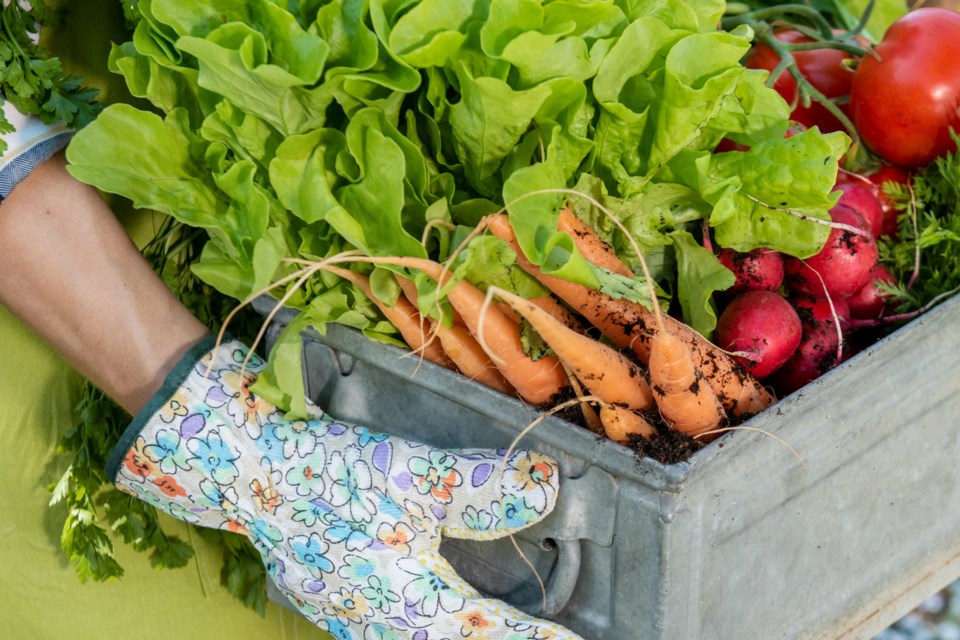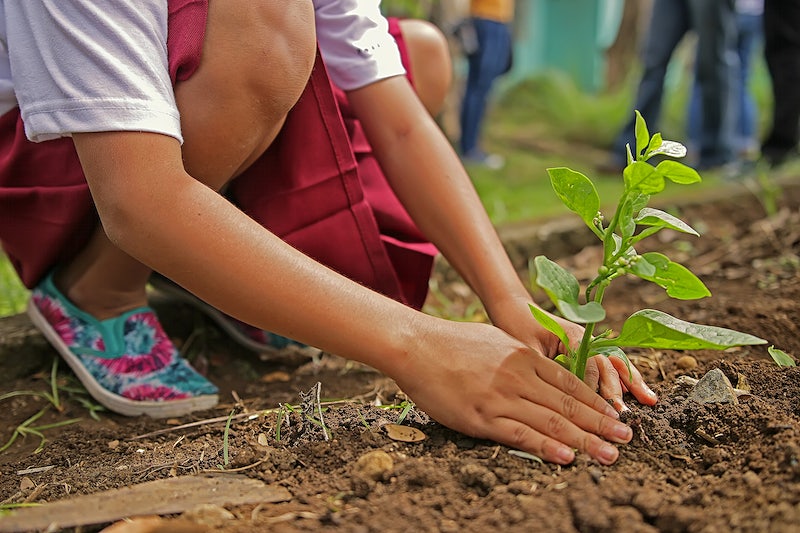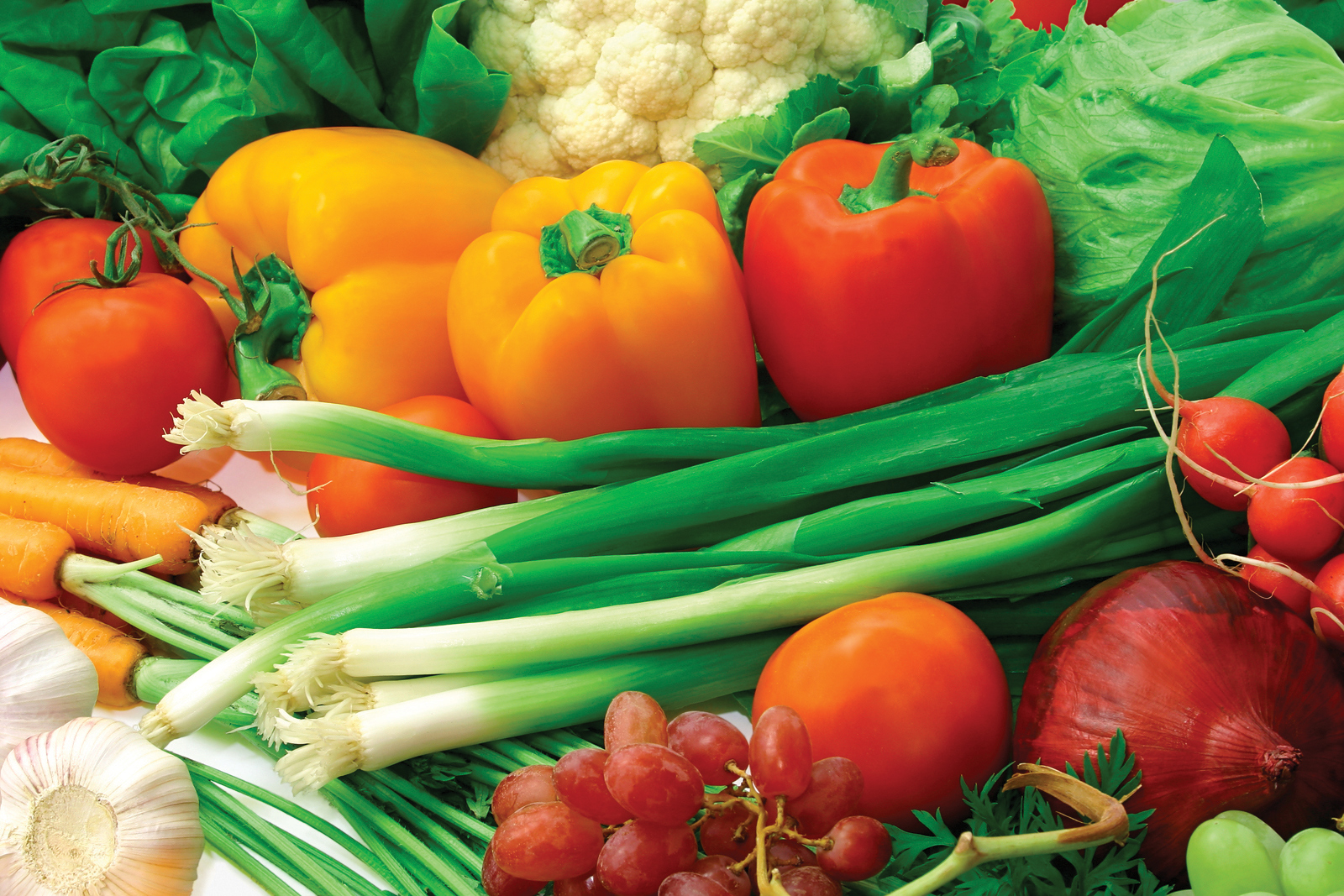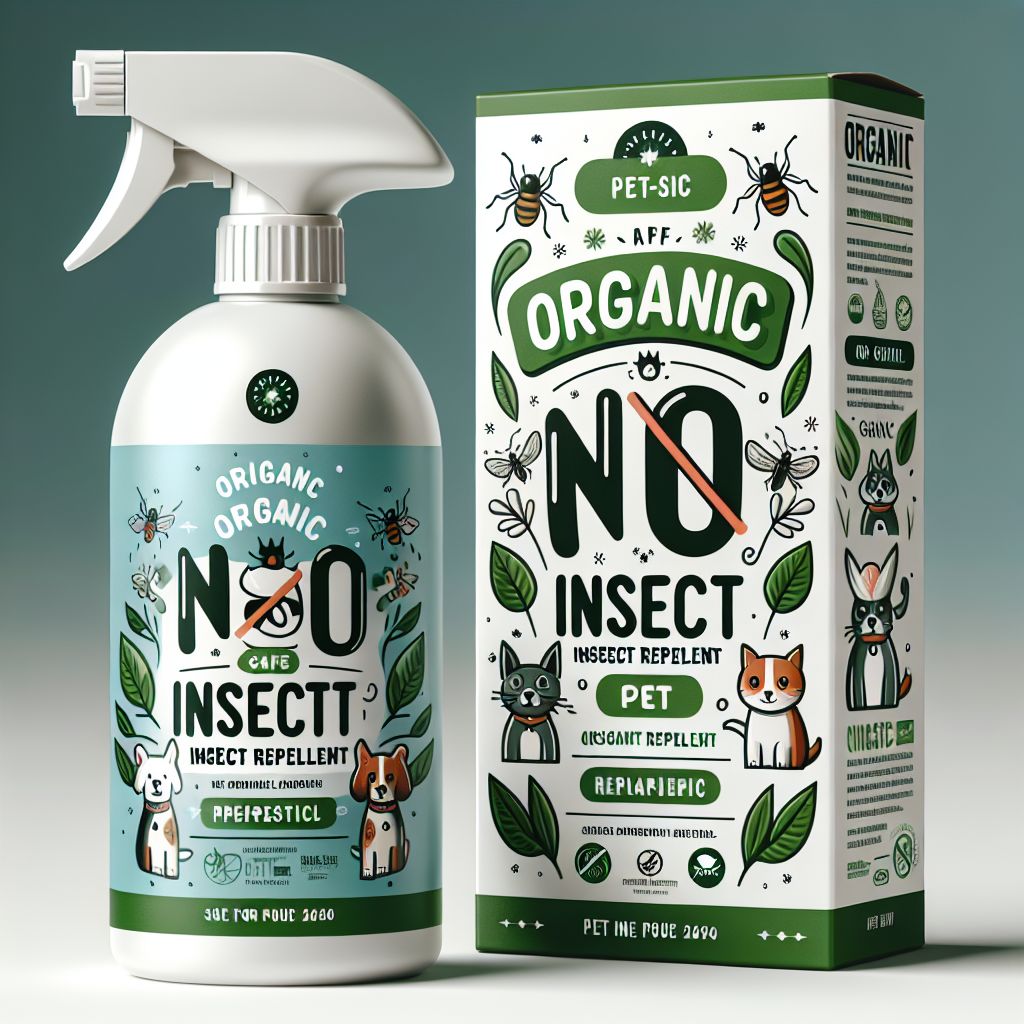Contents
- 1 Starting Your Kitchen Garden Journey
- 2 Handpicking Herbs and Veggies for Success
- 3 Soil and Sunlight: The Dynamic Duo
- 4 Watering Wisely: A Drop-by-Drop Guide
- 5 Harvesting and Storage: From Garden to Table
- 6 Natural Pest Control: Keeping Invaders at Bay
- 7 Fertilizing Fundamentals: Feeding Your Kitchen Garden
- 8 Seasonal Shifts: Adapting Your Kitchen Garden
- 9 Design and Aesthetics: Beautifying Your Space
- 10 Frequently Asked Questions (FAQ)
- 11 Author
Imagine stepping into your kitchen and plucking fresh basil for your homemade pesto, or harvesting crisp lettuce for your salad, right from your windowsill. A kitchen garden isn’t just a source of fresh herbs and veggies; it’s a vibrant patch of life that can transform your cooking and your home. So, let’s dig in and get those green thumbs working!
Key Takeaways
-
Identify the perfect spot for your kitchen garden, considering light and space.
-
Select containers that provide adequate drainage and room for roots to grow.
-
Start with easy-to-grow herbs like basil and chives, and veggies like lettuce and cherry tomatoes.
-
Use a high-quality potting mix and ensure your plants get at least 6 hours of sunlight daily.
-
Water your plants when the top inch of soil is dry, avoiding overwatering.
Starting Your Kitchen Garden Journey

Whether you’re a seasoned gardener or a curious newbie, starting a kitchen garden is a delightful project that yields tasty and healthy rewards. The key is to begin small, choose the right plants, and understand the care they need. Before you know it, you’ll be serving meals with ingredients you grew yourself, and trust me, it doesn’t get any fresher than that.
Deciding on the Best Location
First things first, find the sweet spot. Most herbs and veggies love the sun, craving a good 6 to 8 hours of direct light each day. South-facing windows are usually the sunniest. If natural light is limited, consider a grow light. You’ll also want a location that’s convenient for watering and harvesting, like a sunny countertop or a balcony if you’re going for an outdoor kitchen garden.
Choosing the Right Containers
When it comes to containers, think ‘drainage’. Your plants’ roots need to breathe and excess water must have a way to escape. Look for pots with holes in the bottom or get creative and drill your own. And size matters—make sure the container is big enough for the plant’s roots to spread out. A cramped pot means a cramped plant that won’t thrive.
Stay tuned for more on how to nurture your kitchen garden, ensuring it’s as bountiful as it is beautiful.
Identifying Your Plants’ Thirst Levels
Watering is an art as much as it is a science. Each plant in your kitchen garden has its own hydration needs, but a general rule of thumb is to check the top inch of soil. If it’s dry, it’s time to water. Herbs like rosemary and thyme prefer drier conditions, whereas veggies like cucumbers and tomatoes need more frequent drinks. Pay attention to your plants; drooping leaves often signal thirst, but be careful not to overwater, as this can lead to root rot.
Scheduling Irrigation for Optimal Growth
Consistency is key. Most kitchen garden plants thrive on a regular watering schedule. Morning is usually the best time to water, as it gives plants time to absorb moisture before the heat of the day. For indoor gardens, use a watering can with a long spout to avoid wetting the leaves, which can lead to fungal diseases. For outdoor gardens, drip irrigation systems can be a water-efficient solution that delivers moisture directly to the roots.
Handpicking Herbs and Veggies for Success

-
Consider the mature size of the plants to ensure they have enough room to grow.
-
Research which plants are companionable to benefit each other’s growth.
-
Start with easy-to-grow herbs and vegetables for early success and motivation.
When it comes to choosing what to grow, think about the dishes you love to cook and the flavors you enjoy. Fresh herbs like basil, cilantro, and mint are not only versatile in the kitchen but also relatively easy to grow. As for veggies, cherry tomatoes, radishes, and spinach are great beginner-friendly options that don’t require a lot of space.
It’s not just about taste, though. Some plants can actually help each other out. This is known as companion planting. For example, planting basil near your tomatoes can help repel pests, and they’re culinary companions too. So, think about the relationships between your plants when planning your garden.
And don’t be afraid to experiment. Gardening is a learning process, and sometimes you find the best pairings through trial and error. Just remember to give each plant what it needs in terms of space, light, and love. Yes, love. Talk to your plants, it’s not crazy, it’s caring!
Top Herbs to Kickstart Your Kitchen Garden
Herbs are the perfect starting point for your kitchen garden. They’re generally easy to care for and don’t require a lot of space. Let’s look at some top contenders:
-
Basil: A favorite for its lush leaves and sweet aroma. It loves warm weather and plenty of sunshine.
-
Mint: Hardy and fast-growing, mint can thrive even in shady spots. Just keep it contained; it likes to spread.
-
Chives: With a mild onion flavor, chives are great for snipping onto dishes and are cold-tolerant.
Starting with these herbs can boost your confidence as they’re forgiving and provide quick gratification. Plus, they’re perennially useful in the kitchen. Fresh basil on a pizza, mint in a cooling summer drink, or chives over a baked potato – the possibilities are endless.
Vegetable Varieties That Thrive in Small Spaces
Vegetables need a bit more room than herbs, but that doesn’t mean you need a farm. There are plenty of veggies that are content with container life. Let’s explore:
Cherry tomatoes are practically made for container gardens. They love climbing, so give them a stake or a trellis to keep them happy. Radishes are another great choice; they grow quickly and don’t take up much room. And let’s not forget about leafy greens like spinach and lettuce. They can be harvested leaf by leaf, meaning you get a continuous supply from a single plant.
These veggies not only save on space but also tend to grow quickly, giving you that satisfying feeling of harvest in no time. Keep in mind that they’ll need a little more attention than herbs, with regular watering and feeding, but the payoff is fresh, homegrown produce that you can enjoy with your meals.
Soil and Sunlight: The Dynamic Duo

“Change grey …” from www.educationnaturepark.org.uk and used with no modifications.
Soil and sunlight are like the heart and soul of your garden. They work together to nurture and sustain your plants. Most herbs and veggies love rich, well-draining soil. You can buy potting mix or make your own with compost, peat, and perlite. And remember, sunlight is crucial. It’s the energy source for your plants to photosynthesize and grow strong.
Understanding Soil Types and Nutrition Needs
Soil isn’t just dirt. It’s a living, breathing thing that provides nutrients to your plants. There are different types of soil – sandy, clay, loamy – and each has its own characteristics. For container gardens, a good quality potting mix is best because it’s designed to hold moisture and provide good drainage.
Adding compost to your soil mix is like giving your plants a multivitamin. It’s packed with nutrients and improves soil structure. And don’t forget about regular feeding. A balanced liquid fertilizer every couple of weeks can work wonders for container-grown plants.
Maximizing Light Exposure for Your Indoor Garden
If your garden is indoors, light becomes even more critical. South-facing windows are gold mines for light. If you’re not blessed with perfect windows, grow lights are a game-changer. They can provide the full spectrum of light that plants need to thrive. Just be sure to give your plants a break with a light timer – they need their rest, too.
And let’s talk about reflection. Use light-colored walls, mirrors, or reflective materials to bounce light around your plants. This can help ensure that they get light from all angles, mimicking the natural movement of the sun throughout the day.
Watering Wisely: A Drop-by-Drop Guide

Watering your kitchen garden is a bit like nurturing a friendship – it’s all about finding the right balance. Too little water and your plants might wither; too much, and they could drown. The goal is to reach a happy medium where your plants receive just enough water to thrive. This requires understanding your plants’ unique needs and the conditions of your environment.
Identifying Your Plants’ Thirst Levels
To gauge when it’s time to water, get up close and personal with your soil. By sticking your finger into the soil up to the second knuckle, you can feel whether it’s dry or moist. If the soil feels dry, it’s time to water. Over time, you’ll start to notice patterns in your plants’ watering needs, which can help you develop a more intuitive sense for when to water. It’s also important to be aware of each plant’s specific needs. Some plants, like lettuce and basil, prefer consistently moist soil, while others, like rosemary and thyme, thrive with a bit of dryness between waterings.
Scheduling Irrigation for Optimal Growth
Creating a watering schedule can seem daunting, but it’s actually quite simple. Start by watering in the early morning when the sun isn’t too strong. This gives the plants time to absorb the water before the heat of the day causes evaporation. If you can’t water in the morning, late afternoon is your next best option, but avoid evening waterings as they can lead to fungal growth. Adjust your watering frequency based on the weather – more often during hot, dry spells and less during cool, rainy periods. And always be flexible; no two weeks in the garden are the same.
Lastly, don’t forget to consider the container material. Porous containers, like those made of terracotta, can wick moisture away from the soil, requiring more frequent watering. Plastic or glazed containers, on the other hand, retain moisture for longer periods. Adjust your watering accordingly to match your container’s characteristics.
Harvesting and Storage: From Garden to Table

Harvesting your herbs and veggies at the right time not only ensures the best flavor but also encourages more growth. Herbs should be picked when they are lush and green, before they flower, while vegetables should be harvested when they’re the size you’d buy at the store. The fresher the produce, the more nutritious and tasty it’ll be on your plate. Discover more about sustainable family garden practices to enhance your homegrown produce.
Picking Your Produce at Peak Freshness
With herbs, the best time to harvest is in the morning after the dew has evaporated but before the sun is at its peak. This is when their essential oils are most concentrated. For leafy greens, pick the outer leaves first, and they will keep producing new ones from the center. For veggies like tomatoes and cucumbers, a gentle twist or the use of pruning shears will help you harvest without damaging the plant.
Remember, regular harvesting promotes growth and prevents your plants from becoming woody or going to seed too early. It’s the perfect incentive to use your homegrown goodies in the kitchen.
Storing Herbs and Veggies to Prolong Freshness
Once you’ve harvested your bounty, proper storage is crucial for maintaining freshness. Most herbs can be stored in the refrigerator, wrapped in a damp paper towel and placed in a plastic bag. Some, like basil, prefer room temperature, away from direct sunlight. Vegetables like lettuce and greens should be kept in the crisper drawer to retain moisture, while tomatoes are best left on the countertop to preserve their flavor.
Natural Pest Control: Keeping Invaders at Bay

Even the most well-tended kitchen garden can attract unwanted visitors. The best defense is a good offense, which means keeping your garden clean and monitoring regularly for pests. If you spot them, act quickly to prevent a full-blown infestation. For those with pets, ensuring you have a pet-safe garden can also help in managing pests in a way that keeps your furry friends safe.
Homemade Remedies for Common Garden Pests
Before reaching for harsh chemicals, try natural remedies. A simple mixture of dish soap and water can deter many pests when sprayed on leaves. Neem oil is another great option that’s safe for your plants and the environment. Remember to test any spray on a small area first to ensure it doesn’t harm your plants.
Preventative Measures to Protect Your Greens
Prevention is always better than cure. Encourage beneficial insects like ladybugs and lacewings that prey on pests. Companion planting can also help; for example, planting marigolds can deter nematodes and other insects. Regularly removing any dead or yellowing leaves will also reduce the risk of attracting pests.
Fertilizing Fundamentals: Feeding Your Kitchen Garden

Just like us, plants need a balanced diet to grow strong and healthy. Fertilizing is a way to ensure they get all the nutrients they need, especially if they’re growing in containers with a limited supply of fresh soil nutrients.
Organic Options for Nutrient-Rich Soil
Organic fertilizers are a great way to feed your plants and soil without the use of synthetic chemicals. Compost, worm castings, and organic liquid fertilizers can provide a slow-release of nutrients that mimic the natural growing environment. They not only feed your plants but also improve soil structure and encourage beneficial microbial activity.
When choosing an organic fertilizer, look for a balanced blend of nitrogen, phosphorus, and potassium, which are the primary nutrients your plants need to thrive. You can also find specialized blends for herbs or vegetables, tailored to their specific needs.
When and How to Fertilize Your Plants
Timing is everything when it comes to fertilization. The best time to fertilize is during the growing season when your plants are actively putting out new growth. For most kitchen gardens, this means fertilizing in the spring and summer. Apply fertilizers according to the package instructions, and always err on the side of caution. Over-fertilizing can be just as harmful as not fertilizing at all.
Seasonal Shifts: Adapting Your Kitchen Garden
As the seasons change, so do the needs of your kitchen garden. Being in tune with these shifts can help you adjust your care routine to keep your plants happy year-round.
Transitioning Herbs Indoors During Cooler Months
When the temperatures start to drop, it’s time to think about bringing your herbs inside. To prepare them for the transition, gradually reduce watering to help them adjust to the indoor environment. Before bringing them in, check for pests and treat any issues to avoid bringing them into your home. Place your herbs in a sunny spot and consider supplemental lighting if necessary.
Acclimating your plants to their new indoor environment is crucial. Start by placing them in a shaded area for a week or two, then gradually move them to their permanent spot indoors. This will reduce shock and give your plants the best chance of thriving indoors.
Modifying Care for Plants in Changing Climates
As the climate changes, so might the conditions in your kitchen garden. Increased temperatures might require more frequent watering, while a cooler climate could mean less. Always be observant and responsive to your plants’ cues. Wilting, yellowing, or dry soil can all indicate that your care routine needs adjusting to match the current conditions.
Design and Aesthetics: Beautifying Your Space

A kitchen garden is not just about function; it’s also about form. Designing your garden with aesthetics in mind can make the space more enjoyable and can even become a focal point in your home.
Creative Arrangement Ideas for Attractive Kitchen Gardens
Arrange your plants at different heights to create visual interest. Use shelves, hanging baskets, or even a trellis for climbing plants like peas and beans. Group plants with similar water and light needs together to make care easier. And don’t forget to add some personal touches—decorative pots, colorful labels, or even a small garden gnome can add charm to your kitchen garden.
Functional Yet Fancy: Accessorizing with Garden Tools and Decor
Besides that, your kitchen garden tools can double as decor. Opt for watering cans, pruning shears, and plant misters in designs that complement your home’s style. A chalkboard or a whiteboard can serve as a functional way to track watering schedules and harvest times, while also adding a rustic or modern touch, depending on your preference.
With these tips and a little bit of love, your kitchen garden will not only provide you with fresh herbs and veggies but also become a source of joy and pride in your home. Happy gardening!
With these tips and a little bit of love, your kitchen garden will not only provide you with fresh herbs and veggies but also become a source of joy and pride in your home. Happy gardening!
Creative Arrangement Ideas for Attractive Kitchen Gardens
Visual appeal is just as important as functionality when it comes to your kitchen garden. After all, we eat with our eyes first! To create a garden that’s as beautiful as it is productive, consider these design tips:
-
Utilize vertical space by installing wall-mounted planters or a trellis for climbing plants.
-
Group plants with similar leaf textures or colors for a visually harmonious look.
-
Incorporate flowering herbs like lavender and chives to add pops of color.
And remember, your garden is a reflection of your personality, so feel free to get creative with it!
Example: “I used a simple wooden ladder to create levels for my herb pots, turning an unused corner of my kitchen into a green cascade. It’s not only a conversation starter but also a convenient way to access my herbs while cooking.”
Designing your kitchen garden with aesthetics in mind can be a delightful creative project in itself. The fresh greens against the warm tones of your kitchen can make the space feel more alive and welcoming.
Frequently Asked Questions (FAQ)

As you embark on your kitchen gardening adventure, you might have some burning questions. Let’s address a few common ones:
Can Kitchen Gardens Flourish Indoors Without Direct Sunlight?
Yes, they can! While sunlight is ideal, grow lights are an excellent alternative for indoor gardens. These lights mimic the spectrum of the sun, allowing you to grow a variety of herbs and vegetables indoors. Position them above your plants, and follow the manufacturer’s recommendations for distance and duration.
For instance, leafy greens and herbs typically need about 12-16 hours of light per day, so a timer can be handy to ensure they get just the right amount.
How Often Should I Be Watering My Kitchen Garden?
-
Check the top inch of soil—if it’s dry, it’s time to water.
-
Most herbs prefer to dry out slightly between waterings, while veggies like consistent moisture.
-
Use room temperature water to avoid shocking the plant’s roots.
Remember, overwatering can be just as harmful as underwatering, so it’s crucial to understand the needs of each specific plant.
What Are Some Quick Fixes for Yellowing Leaves?
Yellowing leaves can be a sign of several issues, including overwatering, underfeeding, or a lack of light. First, assess your watering routine and ensure you’re not drowning your plants. Next, consider whether your plants are getting enough nutrients—if not, a balanced liquid fertilizer can help. Lastly, make sure they’re receiving enough light, either naturally or through supplemental grow lights.
Are Coffee Grounds Good for All Herbs and Veggies?
While coffee grounds can add organic material to your soil, which helps with drainage and aeration, they’re not suitable for all plants. Coffee grounds are acidic and best used for acid-loving plants like blueberries. For most herbs and veggies, a balanced pH is essential, so use coffee grounds sparingly and in compost rather than directly in the soil.
How Can I Safely Deal With Insects on My Edible Plants?
For safe pest control, start with preventative measures like keeping your garden clean and free of debris. If pests do appear, try non-toxic solutions like insecticidal soap or neem oil. Always follow the instructions and apply in the evening to avoid harming beneficial insects and to prevent leaf burn during the heat of the day.



